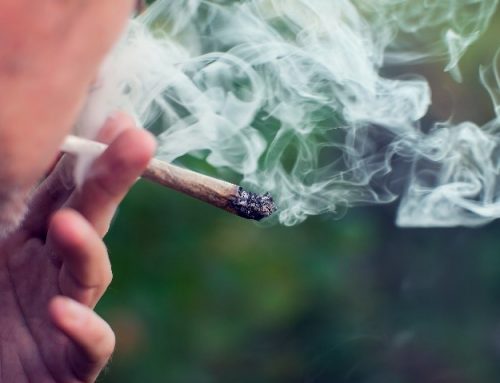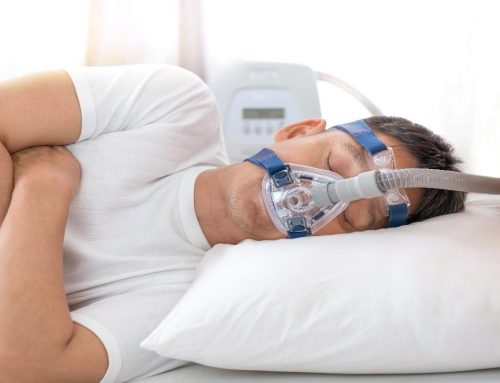Table of Contents
What is CPAP?
 Continuous positive airway pressure therapy (CPAP) is the use of a device that helps an individual who has sleep apnea by continually pushing air gently into the user’s airway to prevent airway collapse when they breathe. The device is easy to use and consists of three major parts, and they are:
Continuous positive airway pressure therapy (CPAP) is the use of a device that helps an individual who has sleep apnea by continually pushing air gently into the user’s airway to prevent airway collapse when they breathe. The device is easy to use and consists of three major parts, and they are:
The CPAP body: This part is the main powerhouse of the CPAP equipment. This part function, by sucking in room temperature air then passes it through a removable filter which screens out particles and impurities. It pressurizes the air to the specific pressure that has been set to prevent the handler’s airway collapse. Some CPAP devices, come with little water tanks to provide humidified air to prevent irritations for the user like dried mouth and dried nasal cavity.
The CPAP hose: This part is what carries the pressurized air to the user form the body. Though the diameters of tubes may vary, based on the model of the device used, the length is the same in most models, at 6 feet.
The CPAP mask: CPAP masks come in different shape sizes and kinds because not every individual would be comfortable with the same type of mask. While they may differ in shape and sizes to fit various types of faces, there are majorly three types; we have Nasal pillow, Full face mask, Nasal mask.
Advantages of CPAP
CPAP is the most effective method of treating sleep apnea or snoring. It keeps your airway passage open, which prevents pauses in breathing and enables the user to breathe better and better. Patients who use CPAP frequently would notice significantly less fatigue throughout the day; users who suffered from excessive day time sleepiness have felt considerably less.
Patients who utilize CPAP tend to have more energy when they get up in the morning due to a good night’s rest.
What is BiPAP
Sometimes known as BPAP, means Bi-level Positive Airway Pressure. This kind of positive airway pressure has two pressure settings. It has high pressured airflow and low pressured airflow to imitate the user’s naturally breathing rhythm. When inhaling, the device uses its high-pressure settings, and when exhaling, it uses the low pressure. This function makes PAP therapy more comfortable, and it is easily tolerated as a way of keeping the airway open while sleeping.
How does BiPAP device work?
 BiPAP therapy helps in treating sleep apnea. It prevents the airway from collapsing by pushing pressured air into the consumer’s airway.
BiPAP therapy helps in treating sleep apnea. It prevents the airway from collapsing by pushing pressured air into the consumer’s airway.
BiPAP devices are intended to deliver high pressured air at inhalation or IPAP (the ”I” standing for inhalation) and when the user is exhaling the BiPAP device senses it and then changes to its EPAP(the “E”, standing for expiratory or exhalation) function which lowers the airflow pressure. BiPAP delivers continuous but yet differing airflow pressure.
It can be set to match a user’s breathing per minute frequency through the timed function.
It can be set to monitor the users breathing and changes if there is any significant shift in the users breathing using the automatic function, compensated by adjusting the airflow to the user’s pace or rhythm so that it maintains a steady airflow.
It also can also be set to both timed and unprompted mode.
Advantages of BiPAP Equipment
The most known characteristic of the BiPAP device is its ability to alternate airflow pressure. When inhaling, the pressure of airflow rises, and when exhaling, it lessens. This characteristic makes it very comfortable for users. It detects when a user’s breathing pattern changes and then changes the airflow pressure timing to follow a similar pattern.
It is also helpful for patients with neuromuscular diseases or those who require breathing assistance standards that CPAP can’t provide.
The BiPAP machine has explicitly proven effective for patients with cardiopulmonary disorders like a congestive heart.
Jaber Hassan, MD of the Blount sleep health center, says that the BiPAP has become an advanced therapy for patients whose respiratory failure is due to COPD. Mr. Hassan says that the use of BiPAP” with the right patient, the use of a BiPAP machine at night can improve carbon dioxide and oxygen levels during the day on a chronic base.” It is highly recommended for patients with reasonable or acute sleep apnea.
In conclusion, CPAP and BiPAP machines require frequent cleaning for them to be effective. These types of machines are cleaned with CPAP cleaners like SoClean and Lumin.



 Shop
Shop



